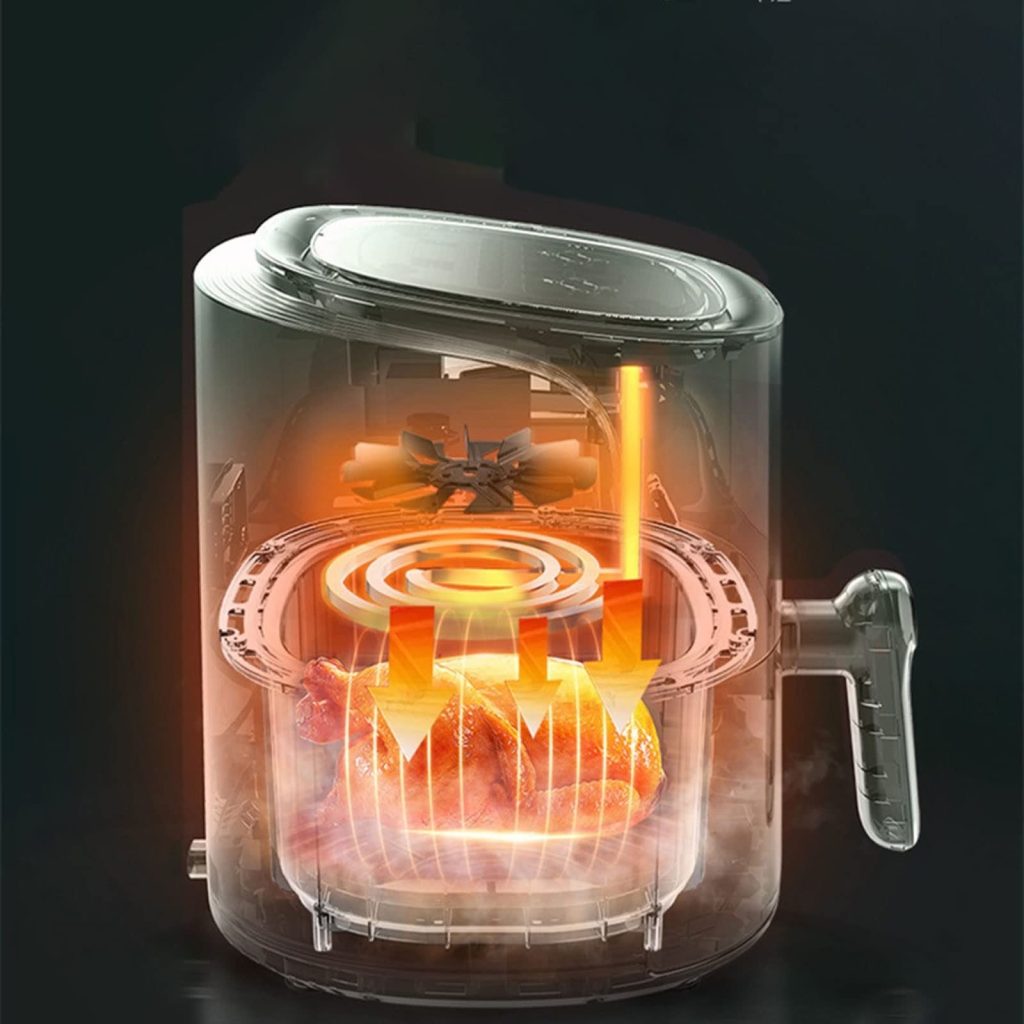Understanding Air Fryers: How Do They Work?
Air fryers have become an essential kitchen appliance for those who love crispy, fried food but want to cut back on unhealthy oils. These innovative devices use rapid air circulation technology to cook food by circulating hot air around it at high speeds, producing a crispy texture similar to deep frying but with significantly less oil.
An air fryer consists of a heating element and a high-powered fan. The heating element warms the air, and the fan distributes this hot air rapidly throughout the cooking chamber. This process, known as convection cooking, allows the food’s outer layer to crisp up while the inside remains moist and tender.

Key Features of Air Fryers
- Rapid Air Technology: Hot air is circulated at high speed, ensuring even cooking.
- Minimal Oil Usage: Requires up to 80% less oil compared to traditional frying.
- Adjustable Temperature Control: Allows precision cooking for various foods.
- Compact and Efficient Design: Small footprint but powerful enough to replace multiple appliances.
- Easy Cleanup: Many models feature dishwasher-safe parts and non-stick coatings.
Air fryers provide a healthier alternative to deep frying while retaining the taste and texture that people love. However, concerns about the toxicity of air fryers have emerged, leading many consumers to question their safety.
Are Air Fryers Toxic? Debunking the Myths
The safety of air fryers largely depends on the materials used in their construction and the cooking methods employed. Here, we examine potential health concerns and provide clarity on their validity.
1. Non-Stick Coatings and PTFE (Teflon) Concerns
Many air fryers have non-stick coatings made of polytetrafluoroethylene (PTFE), commonly known as Teflon. When heated to extremely high temperatures (above 500°F/260°C), Teflon coatings can begin to degrade, potentially releasing harmful fumes. However, most air fryer recipes do not require cooking at such high temperatures, making the risk minimal in normal use.
For those concerned about PTFE, opting for ceramic-coated or stainless steel air fryers can be a safer alternative.
2. BPA and Plastic Components
Some air fryers may contain bisphenol A (BPA) and other plastic-based materials. When heated, these plastics can potentially release harmful chemicals into food. To avoid this risk, consumers should choose BPA-free models with stainless steel interiors.
3. Formation of Acrylamide in Cooked Foods
Acrylamide is a potentially carcinogenic compound that forms when starchy foods (such as potatoes) are cooked at high temperatures. This chemical is not unique to air fryers and is also present in deep-fried and oven-baked foods. However, air frying significantly reduces acrylamide formation compared to deep frying, making it a healthier choice overall.
4. Air Quality and Cooking Fumes
When cooking fatty foods, air fryers may produce smoke or fumes due to oil breakdown. This can lead to indoor air pollution if used in poorly ventilated areas. Using an air fryer in a well-ventilated kitchen can minimize potential exposure to fumes and ensure safer cooking conditions.
Health Benefits of Using an Air Fryer
Despite concerns, air fryers offer numerous health benefits compared to traditional frying methods:
1. Reduced Oil Consumption
Using significantly less oil than deep frying, air fryers help reduce calorie and fat intake, lowering the risk of obesity and heart disease.
2. Lower Acrylamide Levels
Studies have shown that air-fried foods contain up to 90% less acrylamide compared to deep-fried alternatives.
3. Preservation of Nutrients
Air fryers cook food quickly, which helps retain more vitamins and minerals compared to prolonged cooking methods.
4. Better Cholesterol Control
By reducing oil consumption, air frying helps maintain healthier cholesterol levels, decreasing the risk of cardiovascular diseases.
How to Use an Air Fryer Safely
To maximize safety while using an air fryer, follow these essential guidelines:
- Use BPA-Free and PTFE-Free Models: Opt for stainless steel or ceramic-coated alternatives to avoid chemical exposure.
- Avoid Overheating: Keep cooking temperatures below 400°F (200°C) to minimize the risk of Teflon degradation.
- Ensure Proper Ventilation: Place the air fryer in an open space to prevent smoke buildup.
- Clean Regularly: Regularly clean removable parts to prevent oil buildup and extend appliance longevity.
- Avoid Cooking Processed Foods Frequently: Limit the consumption of highly processed frozen foods to reduce acrylamide intake.
Are Air Fryers a Safe Choice?
Air fryers are a safe and healthier alternative to deep frying, provided they are used correctly and purchased from reputable brands. While there are concerns related to non-stick coatings, BPA exposure, and acrylamide formation, these risks can be effectively managed with proper precautions.
By choosing high-quality, BPA-free, and PTFE-free models, maintaining moderate cooking temperatures, and ensuring proper ventilation, consumers can enjoy the benefits of air frying without compromising safety.









